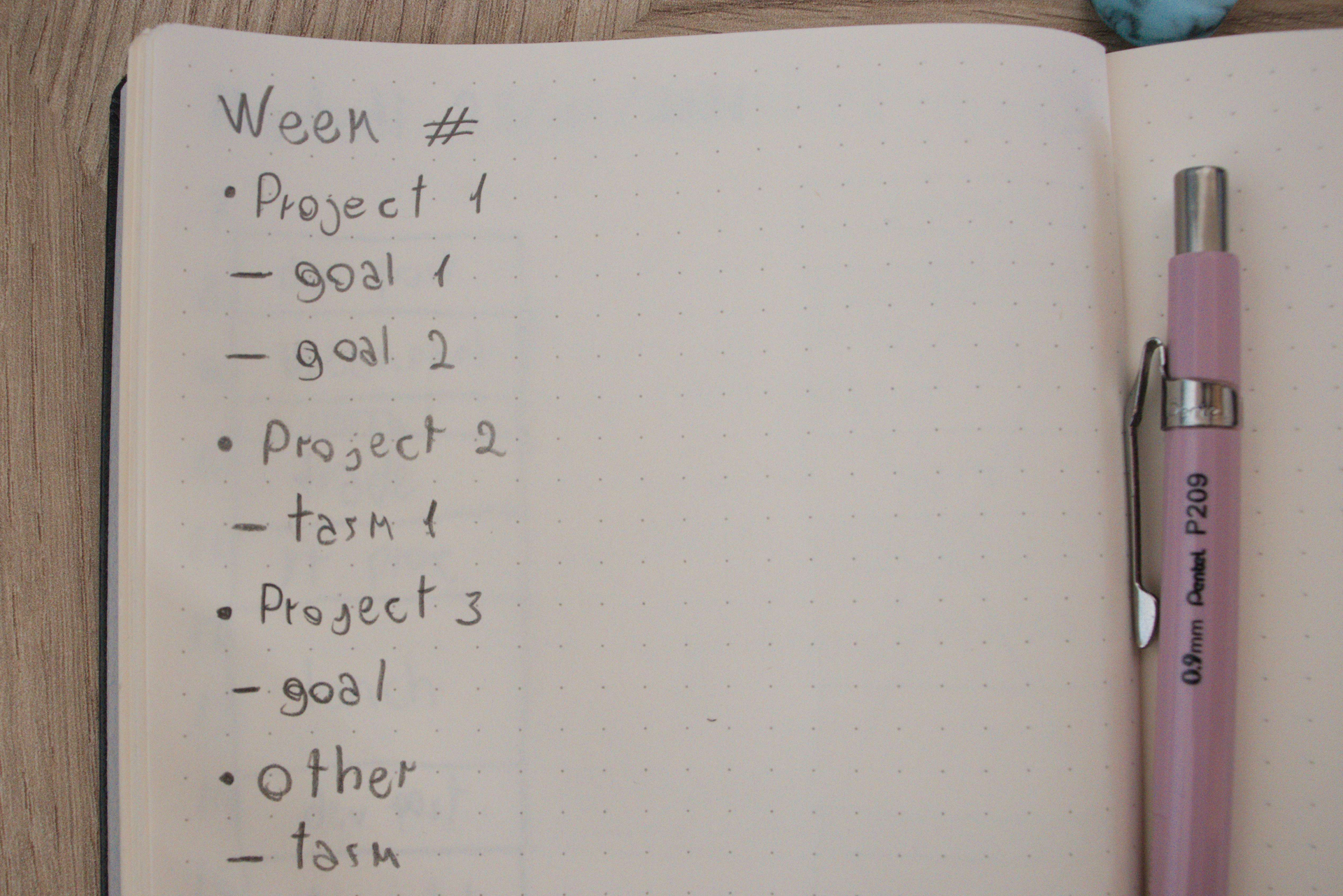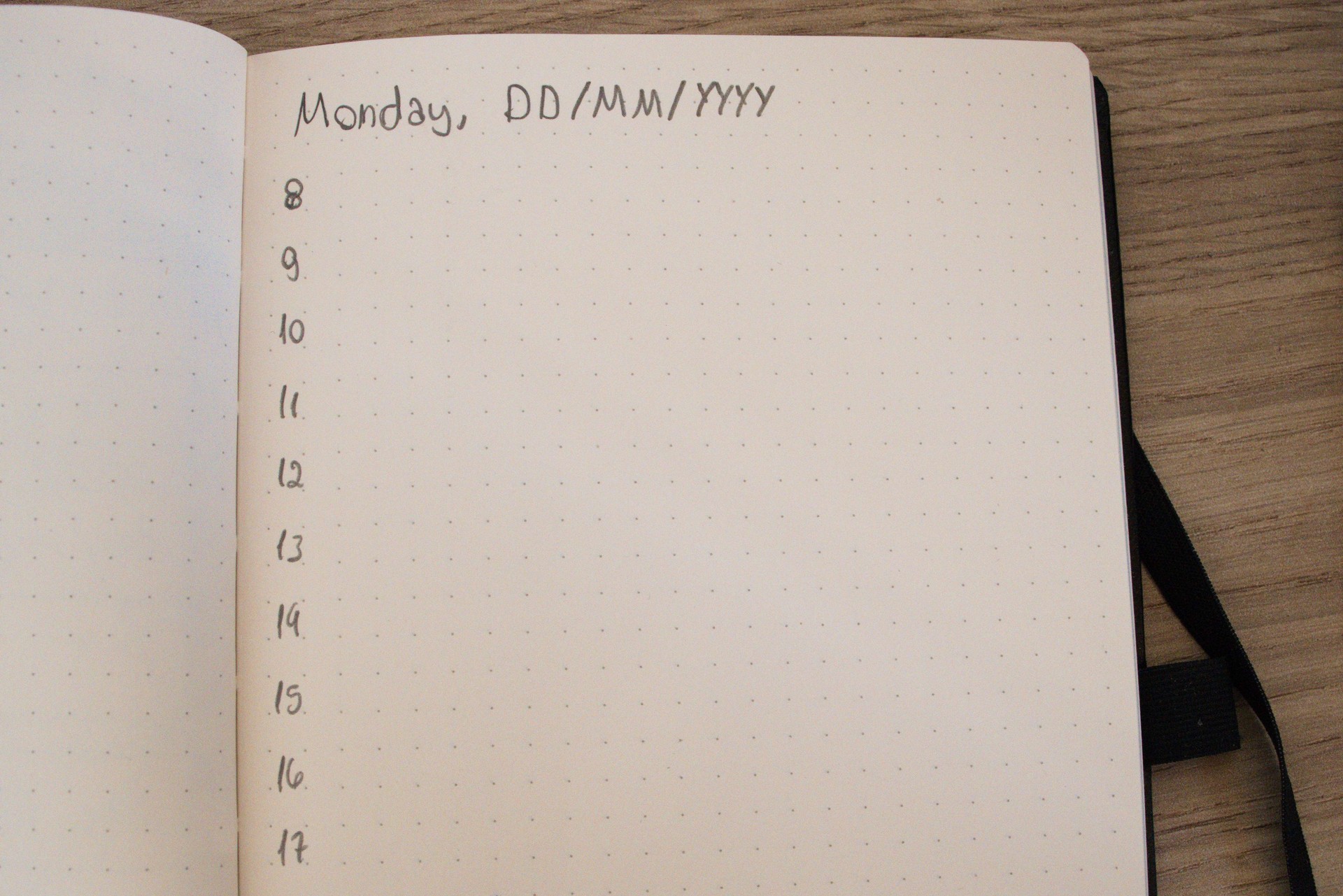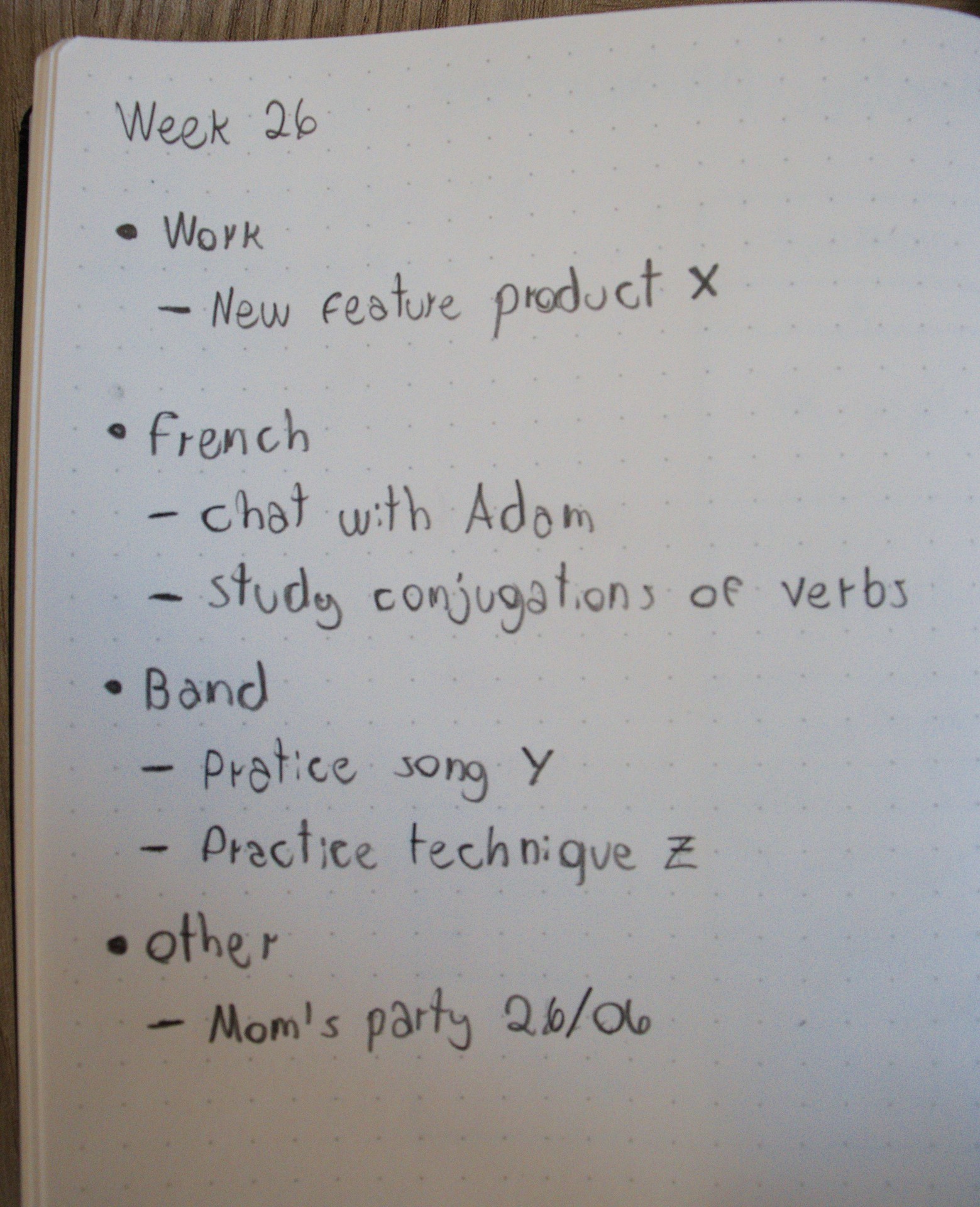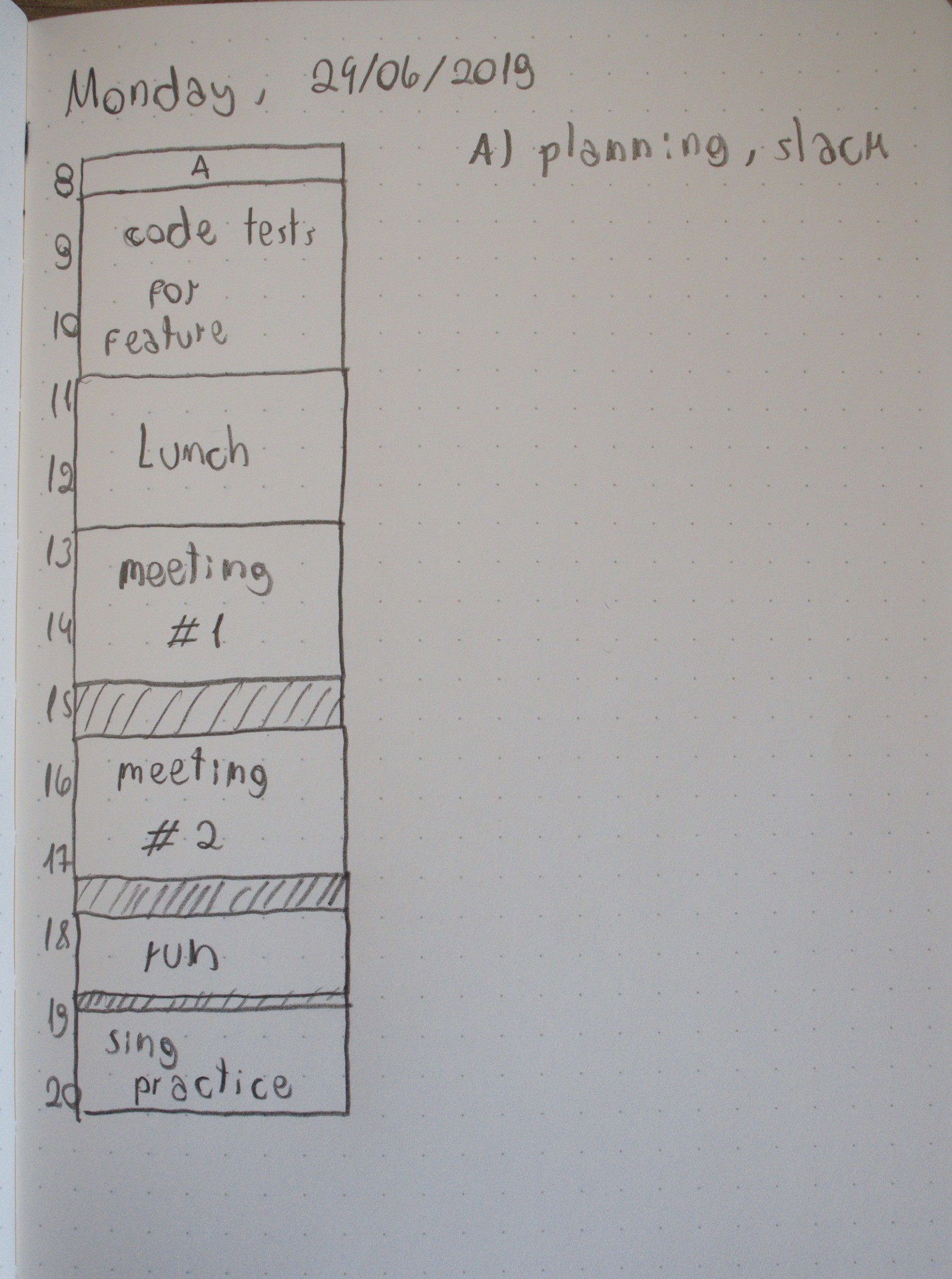Have you ever encountered yourself dealing with two or more contexts on your work at the same time? You were coding the solution from problem A. Your peer on Slack requests your help to access some database to solve problem B. Then you saw a discussion on a thread on problem C that also relates to problem D. You follow some of the links posted on the thread, and an hour goes by you realize that you are not supposed to be doing that. Or even worse, you are watching a talk about some new tools for scaling on Kubernetes even though you don’t use Kubernetes. You may have helped your peer, or caught up with the discussion, reached four different problems of your work “at the same time” but still, that sensation of achieving nothing kicks in.
I remember - after the pandemic hit us hard and the shift on our routines made pretty much everyone crazy - I was feeling this sensation daily! I was so overwhelmed by the amount of information coming in, that I had to find a way to better manage my attention. I blocked distracting websites, started to decline more meetings, and limited my work hours. These had their small positive contributions. But everything changed when I reframed my approach for the day, especially working hours.
For almost a year now, I’ve been using a method to better structure my day. This had helped me a lot with dealing with this chaos, and I going to share it with you.
What
This method is heavily based on one of the main ideas on book “Deep Work” from Cal Newport1. It has three main principles:
The first and most important principle is to avoid working in “reactive mode”. Where you address the tasks that are most demanding at the time. My story that you read in the introduction (Yes! That was me!), is a great example of a reactive mode workday. Instead, you want to switch to intentional mode, where you plan your week and your days before actually starting working.
The second principle is the ability to look ahead and rethink. When I used to play football as a kid, my coach always said:
Raise your head and look before you make a pass. Because at every moment of the game you decide where the match goes. By choosing a teammate that is surrounded by opponents or the one that has a chance to score the goal.
We can steer the direction of the day by pausing and seeing if what is left to do still makes sense to do it. In other words, you plan your day but don’t strictly follow the plan. Remember, the importance is on having intention!
The final concept is to stop multitasking. There’s a widespread fallacy that claims people can deal with multiple tasks at a time. However, the reality is the opposite2. You can, and often need to, solve issues from multiple contexts on the same day, but not at the same time. By planning, you assign time to tackle each of these matters separately.
How
Now let’s dive in on how we can apply these concepts to our day-to-day. For this, we’ll be using a custom time block planner3. Be aware that I don’t follow exactly like that. This is aimed to be used during your work hours. However, over time, I expanded to my projects. Therefore, I’m going to explain the way that I do it. I recommend using it as an inspiration to create your own. Oftentimes, these methods are not 100% suited for our personal use. There’s always some tweaking that needs to be done!
Tools
Go analog! Seriously! You don’t need a computer to do this. You could be using an app or other digital tools. But, that’s just another opportunity to get distracted! Also, the pencil and paper make the habit to stick, since every day you have to sit and calmly write down what you have to do. It becomes your daily ritual.
Any simple notebook and pen will do it. However, since it’s something that you’ll do every day, I’d buy something of quality and not the cheapest. You don’t need to aim for the higher end, though. Going a little nerdy now: for instance, I use a medium size (125x200mm) notebook, so it’s easy to transport. Dotted pages that help me on writing straight lines without the need for a ruler. Somewhat thick page (80g/m²), since I’m a heavy writer. And, a mechanical pencil with 0.9mm lead. Again - thick - due to the force I put on writing.

Weeks
On the first day of the week, you do the weekly planning. Here, you mark the current week number and you list the projects that you are currently active on. Right below them, you list the main goals or tasks that you want to get done by the end of the week. You don’t have to be specific here, just list one or two high-level goals/tasks for each project. Remember to be mindful about it. In my opinion, three should be the maximum number of goals for each project. You want to list the things that you actually could achieve in this period. If you are familiar with the “Sprint Review” from Scrum, then this would be the Sprint goal. However, here we are giving one (or more) for each project.
But “what is a project?”, you may ask! A project is a context of your life that act upon for a while. For example, if you are in school this can be a project. Your job?, That’s another project. If you are studying another language, this can be a project too. Now, what if you have a different context inside those projects? You can list them as subprojects. Taking the school example, one subproject could be the classes and the other one the research or extracurricular that you participate in. At work, if you act on hiring and a specific product, these could become two subprojects on your weekly planning. You decide the granularity of it. On top of that, I recommend having an extra project to set tasks that don’t fit into the previous ones. Usually, I put here family stuff and other non-recurring obligations of the house.

Days
Right after your week planning, on the next page, you start the daily plan by marking the day of the week following by the date. On the left side of the page, you list the hours that you want to have intention! Skipping one line between each hour. Every line here represents 30 minutes. You could start listing from the moment that you wake up until you go to sleep. But, I don’t recommend that. It’s cognitively demanding to follow a time block plan, and you would just burn out in the long run. You want to have periods on your day to you do whatever you want (or need) without planning it. For me around twelve hours is my max. Therefore, I plan from right after breakfast up to the last or event after work. That’s usually from 8 am to 8 pm.

Afterward, you draw the blocks reflecting your events and tasks that you need to do on that day. I start with the meetings and events that I need to attend. Then, based on my week planning, and other work tools to track tasks (like JIRA), I fill the slots that I need focus to tackle those. For me, I try to set 90 minutes blocks (3 lines on the page) to these concentration tasks. For low cognitive or quick ones, you can batch them onto one small block. For instance, email and catch up on Slack plus other quick administrative work. On these types of batch tasks, you’ll see that you don’t have enough room to write on a 30 min block. In that case, you just mark it and list the tasks on the right upper corner side of the page.
Aside from the events, It’s really important also to schedule breaks, buffer, and commuting time. Breaks are crucial. They are often neglected, especially on those days that you are “on fire”, getting a lot done! But don’t fool yourself, we need them4. Sometimes we forget that we are not robots! Based on the Pomodoro technique, 30 minutes after 2 hours is a good rule of thumb. But that will vary according to your need. Most of the days I set three big breaks: one to two hours right around lunch, 30 minutes in the afternoon to drink a coffee, and another 30 minutes right after work, before my last task to transition to the night5. If I start to work early like 7 am or 8 am, I take another break around 10 am!
Likewise, remember to schedule buffer and commuting time. We forget that between two events or tasks there will be transitions, either physical or mental. So, between two meetings, set a 10 minute time window as a break. When you have to go somewhere, include the commute time on the task block!

As the day progresses you will notice that we are really bad at planning! Certainly, you will need to reschedule some tasks or events. That’s why we drew the blocks on the left side of the page, leaving the middle and right sides clear. When something goes off course, you just redraw (from the current time) the new plan right next to the previous one. The right side is an extra column for another re-plan. I’ve never needed a fourth column. Furthermore, some unexpected tasks or ideas can pop into your mind during the day. What do to with those? Well, that depends. Work-related, I use Slack’s reminder feature. For personal things, I put them on the lower part of the page to be addressed later.
You repeat this process every day up to the end of your week. I just do this on weekdays, leaving weekends free. The same goes for vacations or sick days. But as I repeated throughout this essay: you have to adjust to your needs. There will be workdays, though, where you will skip the planning. Those days, when chaos takes place, are the ones where some urgent duty comes up, followed by another one, and another one, and when you see it’s already afternoon and you didn’t plan. Or when your motivation is below zero Kelvin, and you just WON’T do it! And that’s ok. Don’t go too hard on yourself. On the next sunrise, you get back to it. We are aiming for the long-term!
As I’m checking my notebooks here, throughout this year, I had two of those days: the first one was because I had an appointment early in the morning and I left to do the planning when I’d come back. However, a bug on production popped right before getting home. That took me the whole day. Of course, I didn’t plan! The other one, a recent one, was a day that I just looked at the notebook and just thought: “Nop!, Not today”. I just ignored it and worked on reactive mode on that day. Remember: we are not robots!
An example
The most important part of having intention on your day is the execution. To illustrate it better, I’m going to come up with a hypothetical situation. Let’s imagine that you are a developer on X company, you are learning French and, you are a singer in a band (You are really cool!!!). It’s week 26 of 2019 (let’s use pre-pandemic times :D). You are coding a new feature for a product, you have a weekly chat with a native french called Adam, a concert scheduled for next week, and your Mom’s birthday on Wednesday.
On Monday, June 24th, at 8 am, you sit down to do your weekly planning. Ten minutes after you come with the following:

Right after that, you do the planning for your Monday. You have to attend two meetings, a run session at night and singing practice. You come with the following plan for your Monday:

Right after planning, you do some email and Slack to get any updates. And then, you enter the next big block: code the tests for the feature. You set aside the notebook, and start working on that. In other words, if you have to code a test case for your feature, you don’t need Slack or your inbox opened, you are not watching a youtube video at the same time, nor with a code-review tab opened. You are coding the tests for your feature! Again to emphasize a little bit more: YOU ARE CODING THE TEST CASES FOR YOUR FEATURE. While you don’t finish it or your time block expires, you do nothing else.
It’s tempting to think: “oh just a look at this message on Slack”, or when your test suit run that takes more than a minute: “let’s take a quick look at Twitter”. No! As I mentioned earlier, context switching does not help you on accomplishing the task at hand. By being fully present on “coding the tests” you improve the odds of finishing it with quality and on the time window that you planned (or even earlier than that). Fail to resist that, and you may have to reduce the time of your lunch, or maybe attend the meeting 1 divided with the coding. Or even worse, the tasks linger to meeting 2, occupying the whole working day.
This can happen due to bad estimates, but that is not a problem. When this happens you have to adjust the plan. Let’s say that you worked well in the morning, but meeting 1 took an extra half an hour. Now it’s time to rethink. Maybe you can reduce the afternoon break. Or re-evaluate the necessity of attending meeting 2. Since meeting 1 was long and meeting 2 is important, you decided to keep that break and attend the next meeting. So you postponed a bit your run session and the following tasks. You come with the updated daily plan:

As the days progress, you want to mark the things that are being accomplished. For instance, on Wednesday 26th, you check that you had a fun chat with Adam the day before. On Thursday 27th morning, if you attend the birthday party at your mom’s, you check that. On next Monday, July 1st, you sit down again to a new week planning. Looking at the previous week, you see that you didn’t study the french verbs due to an unexpected company event on Thursday. Now it’s time to rethink: Will I have room this week to study it? Isn’t better to postpone to the next week, since you want to focus on the concert that is coming? Notice that these are all questions. And only you will answer them. You decide what is more important to do with your time.
Outcomes
I didn’t even complete a full year with this method. But, I’ve already seen the benefits. Besides having intention and concentration on my daily tasks, I noticed two other outcomes from this habit that is worth mentioning to you.
The first one is that we start to face the truth. The idea is not to track, but since you are writing the plan of your actions, you can easily evaluate how much time a given task consumes. When you say that creating a report takes 30 minutes, but every time you have to increase that time window, you know that in reality, it takes longer! Today, some set of activities from my job, I already know how much time it will consume. I’m much more accurate on estimation, my mean error is around 30 minutes.
On top of that, with the week planning, you also have a bird’s-eye view of what you have done! If your company does employee evaluations recurrently, you can start your self-evaluation6 by looking at your past pages to see what you were up to. That works for personal projects too. I started to do personal quarterly reviews on top of that. But that’s another story.
The other outcome is the boost on your “throughput”. After the first months, I suspected that I was delivering the tasks much faster than I used to. I noticed that code reviews from my peers were becoming my bottleneck. In the beginning, I just kept working. I started to use the idle time to fix a technical debt of the project or to improve the readability on part of the code or update documentation of the project. Months later, during a round of feedback, my leader said to me that I was delivering a lot and with quality, He said: > On every delivery, you always add something new, something better.
I know that is anecdotal, but I wasn’t doing overtime nor working on weekends. Looking at my notebook pages here I see that on average I work 7 hours per day, including the 30 min afternoon breaks! My point here is that this feedback was another big fact supporting my hypothesis from months before. This realization made me feel so empowered! It was like learning to unlock avatar state7.
Finishing the days with the sensation of progress is invaluable. It motivates you! It keeps you moving forward in this world surrounded by noise. However, to achieve that, we need to manage our time and attention. We are the ones who dictate our daily journeys! We choose if we just want to wander all day long or to act on what matters with intention. The former just leads you to an unfulfilling experience at the end of the day. The latter can make you discover things that you didn’t even know that you were capable of. What are you waiting for? Go and start having intention on your days!
I want to thank Artur de Luca and Bruno Zimpel for the reviews!
- I highly recommended read it, if you want the better understand the power of concentration. [return]
- I’m not citing a specific article, but there is research supporting it. Check it here and here [return]
- Not sponsored by it! But check it out! [return]
- Seriously, you need downtime! Go watch an episode of Friends or Brooklyn Nine-Nine! [return]
- This is my web surfing, social media, or just listening to rock concerts time! [return]
- There’s a really good post on writing self-evaluations by Julia Evans. She calls Brag Documents. [return]
- For the ones that don’t know this masterpiece. [return]